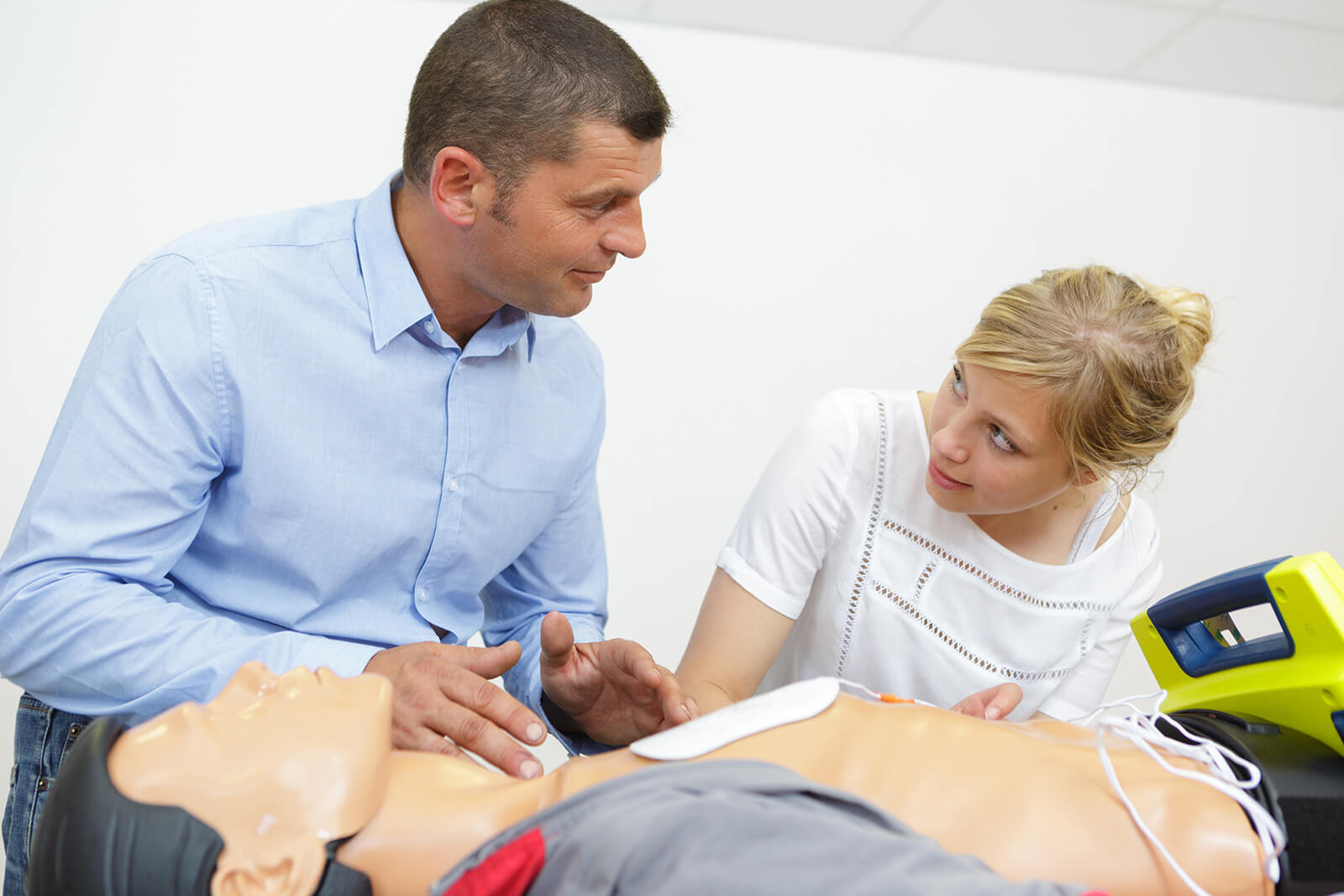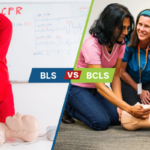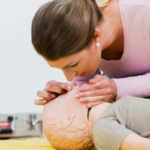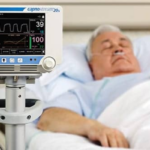
- Last Updated On: May 30, 2024
What is Two-Person CPR?
In nationally accepted 2 person CPR steps, two lay rescuers help the patient suffering from sudden cardiac arrest as they call 911 and start performing chest compressions next. It helps in keeping the blood flowing throughout the essential body parts of the patient: the heart and brain.
The 30 compressions and 2 rescue breaths offered during CPR are efficient when there are two rescuers at the scene of this medical emergency. This can expedite the recovery of the patient before the medical team arrives, as requested on the call to 911.
Brief on two-person CPR
Often, CPR is also administered by a single rescuer or lay responder. However, two-person CPR is more effective with mouth-to-mask ventilation to the adult injured or suffering patient on time.
Two-person CPR involves the same procedures as one-person CPR. However, this type of CPR makes the entire process faster because of the second single rescuer at the emergency scene. Also, they have to change positions after about 2 minutes to give one another a breather to do the adult CPR properly without gasping. There are many advantages to having two people administer high-quality CPR, but primarily, it minimizes the interruption of performing chest compressions.
Knowing how to properly perform two-person CPR can be crucial in decreasing interruptions of chest compressions and keeping someone alive until emergency personnel arrive.
American CPR Care Association offers a completely online CPR/AED certification course to ensure that everyone can receive the training necessary for saving lives. In this blog, we will explain how to properly administer two-person CPR after you give a call to 911 and discuss how this procedure can be essential in the event of an emergency. That is an important lesson for two rescuers, as the 2nd rescuer can call 911 or even arrange an AED before the patient loses their consciousness, heading toward brain damage or death situation.
Why is Two-Person CPR Useful?
Two-person CPR is ideal whenever possible. This is primarily because administering high-quality chest compressions can be exhausting. To offer effective chest compressions, you must push down on the chest at a depth of about 2 inches or ⅓ the depth of the chest. This can be a very tiring experience, and people can get worn out quickly.
In fact, according to an article published by the National Institutes of Health, most people experience fatigue and begin offering shallow compressions after only 1 minute of high-quality chest compressions.
Thus, it can be very helpful to have another person assisting in CPR so that chest compressions can be steadily continued while waiting for emergency first responders.
Two-person CPR frees up one person to obtain an automated external defibrillator (AED) and call for emergency assistance while CPR procedures are being performed.
How to Perform Two-Person CPR
To perform two-person CPR, follow these guidelines:
- The first person on the scene should immediately begin offering chest compressions and rescue breaths. But make sure someone calls 911 as well. The first responder should follow a pattern of 30 chest compressions and 2 rescue breaths. Chest compressions should be administered at a rate of approximately 100-120 compressions per minute. Additionally, chest compressions should be counted out loud to ensure accuracy and clarity.
- The second person should obtain an automated external defibrillator AED if available, while the first is administering CPR. Additionally, the second person should call 911 for emergency assistance or designate someone specific to do so.
- Once an AED is obtained, the second person should begin applying its pads while the first is providing chest compressions.
- Additionally, once the AED is on the scene, the second person can begin to offer rescue breaths while the first rescuer continues administering chest compressions.
- After 5 cycles of chest compressions (or if the person offering the compressions becomes tired), the 2 responders should change roles so that the person giving chest compressions doesn’t become too weak to administer them effectively.
It’s essential to allow the chest to return to its initial position between each chest compression, and those who are fatigued may lean on the chest too much to allow it to inflate fully. Thus, ensure you’re switching roles for the victim to receive only high-quality chest compressions and the right depth of CPR at all times.
Additionally, to provide clarity and minimize disruption, make sure to yell out “Switch!” when you’re the one offering chest compressions at the end of your last cycle of 30.
- Make sure that you’re switching quickly between rescuers to minimize interruptions in chest compressions.
- Once the AED has analyzed the heart, if it determines that a shock is necessary, make sure that no one is touching the victim while the shock is administered. Resume CPR procedures immediately following the use of an AED.
Read More: Steps To perform CPR
Important notes on Performing CPR
Prior to administering CPR, make sure that you always quickly scan the area for safety. This can be another advantage of having 2 people administering CPR rather than just one. Another set of eyes can ensure safety during CPR procedures.
Additionally, if you’re administering CPR to a child, make sure you’re particularly careful, as children are more prone to injury. Make sure you know how CPR is different for infants compared to adults.
Always try and avoid moving an unconscious individual, but if you must move them, make sure you’re being gentle and supporting their head, especially if this victim is a child. Furthermore, if an AED is being used during the resuscitation of a child, use child pads if available.
If you are administering CPR to an infant, use only 2 fingers when offering chest compressions, and press to a depth of about 1 ½ inch. Not more than that.
Notes on AED and performing 2-person CPR
Two-person CPR can be extremely advantageous. When 2 people offer resuscitation, one person can obtain the AED and call for emergency services while the other administers high-quality chest compressions and rescue breaths.
Additionally, once an AED is obtained, and emergency personnel notified, one rescuer, can offer chest compressions while the other provides rescue breaths. Furthermore, the two rescuers can switch between offering chest compressions to avoid fatigue and ensure that compressions are always high-quality (pressed to about ⅓ the depth of the chest).
If you’re offering 2 person CPR, make sure that you’re counting off your chest compressions out loud and yelling “Switch!” when you need the other rescuer to begin offering chest compressions in your place (ideally after 5 cycles). Also, make sure you’re vocalizing if you’re getting too tired to continue delivering high-quality chest compressions and always minimize interruptions in chest compressions by switching roles as quickly as possible.
Conclusion
Being prepared in the event of cardiac arrest or respiratory failure is one of the best things you can do for your loved ones and for others in society. Taking our online CPR/AED certification course can ensure that you’re ready to offer life-saving assistance if and when you find yourself in an emergency situation. For accurate training and information on updated CPR procedures, check out our blog or reach out to us via our Contact page.






